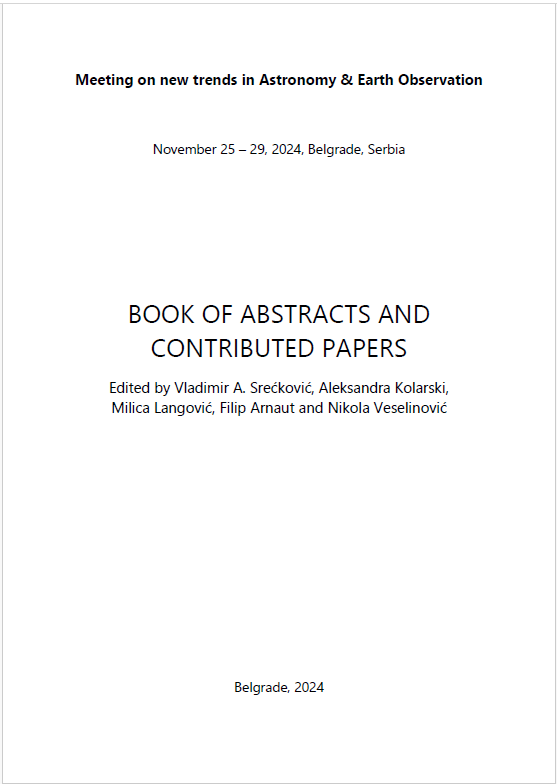RECENT ADVANCES IN THE KINETIC AND FLUID MODELING OF RESISTIVE PLATE CHAMBERS
Saša Dujko, Ilija B. Simonović, Danko Bošnjaković.
Publication
BOOK OF ABSTRACTS AND CONTRIBUTED PAPERS - International scientific conference: Meeting on new trends in Astronomy & Earth Observation, Page 35-37, https://doi.org/10.69646/aob241209
BOOK OF ABSTRACTS AND CONTRIBUTED PAPERS - International scientific conference: Meeting on new trends in Astronomy & Earth Observation, November 25-29, 2024, Belgrade, Serbia, Edited by Vladimir A. Srećković, Aleksandra Kolarski, Milica Langović, Filip Arnaut and Nikola Veselinović
Published by: Scientific Society Isaac Newton Belgrade
Published: 15. 12. 2024.
Abstract
Abstract: This work explores and describes new advances in fluid and kinetic modeling of resistive plate chambers (RPCs). RPCs are gaseous particle detectors often used for triggering and timing purposes in many high-energy physics experiments. At the Large Hadron Collider at CERN, all mega science experiments, ATLAS, CMS, ALICE, and LHCb, use RPCs in slightly different configurations, mainly for triggering muons and particle identification (Abbrescia et al. 2024). RPCs are also used for detecting charged particles in extensive air showers, which are cascades of secondary particles created when a high-energy cosmic ray interacts with the Earth's atmosphere (Abreu et al. 2018). RPC detectors are a vital component of the Iron Calorimeter detector at the India-based Neutrino Observatory (Kumar et al. 2017). They are used to detect muons produced by neutrino interactions with the iron plates in the Iron Calorimeter. RPCs can also be used for air quality monitoring by analyzing ionization caused by pollutants. They also found their way in novel medical imaging technology that combines RPC technology and Positron Emission Tomography (Fonte et al. 2023). In most of these experiments and applications, RPCs are operated with a gas mixture composed of C2H2F4, iso-C4H10, and SF6. Due to the very high global warming potentials of C2H2F4 and SF6, the search for a suitable replacement for C2H2F4 and SF6 is currently one of the major concerns in RPC technology. This work explores the possibility of using C3H2F4 and C3HF5 instead of C2H2F4, as well as CF3I, C5F10O, and C4F7N instead of SF6. Using a swarm method of deriving cross sections, we have developed complete and consistent cross-section sets for electron scattering in these gases. Cross sections are then used as input to solve the Boltzmann equation. The hierarchy of kinetic equations resulting from a spherical harmonic decomposition of the Boltzmann equation in the hydrodynamic regime is solved numerically by expandin ... - FULL TEXT available in PDF.




